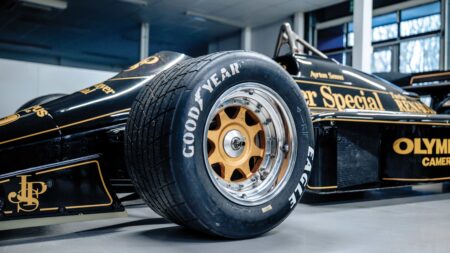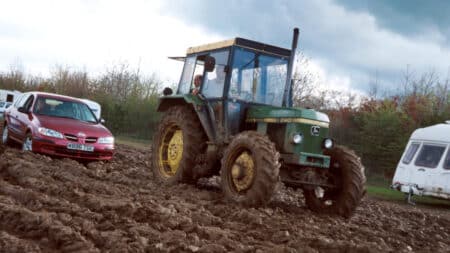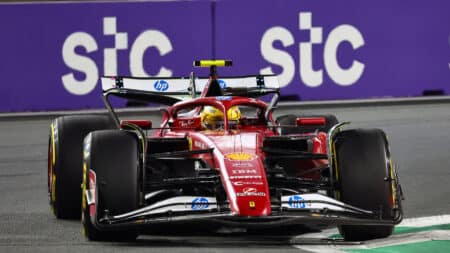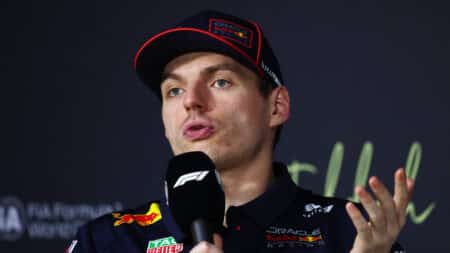
Senna's Lotus 97T: exclusive shoot of F1 legend's first winner
It's 40 years since Ayrton Senna's incredible first F1 win at Estoril – we captured the brilliant grand prix car he did it in for this month's magazine
There is much to like about the Williams Formula 1 team. Fondly remembered as Williams Grand Prix Engineering, known affectionately as Team Willy, now called Williams F1 and soon to be known as Williams Grand Prix Holdings plc, this is a quintessentially British team. And long may that last.
The Williams folk are big-hearted racers, and that comes from the very top, Frank and Patrick setting the tone and staying true to their values.
This week, at its headquarters at Grove in Oxfordshire, the team held its ‘livery launch’ for 2011, the car itself having already been seen and examined at Valencia, Jerez and Barcelona.

Underneath a smart navy blue livery, boldly featuring new sponsor PDVSA (the Venezuelan state oil company), FW33 is the most radical Williams for a long time. These days, explained technical director Sam Michael, you have to take risks to get ahead.
There was much talk of ‘tight rear ends’, stirring not a little mirth and banter among the assembled British journalists. “Let’s face it,” said the eloquent Sam, “everyone likes a tight rear end.” He is referring, of course, to the back of FW33 which is notably compact, low and neat.
This has meant designing and building a new gearbox (the smallest the team has ever produced) and angling the driveshafts upwards towards the wheels, that being a radical move and entailing use of a recently developed technology. Like all teams, Williams is searching for downforce in the wake of a ban on double diffusers. The success of the new gearbox will be important because this year it must be used for five races rather than four as in 2010.
Rubens Barrichello did not come to Grove, the date clashing with his 14th wedding anniversary. Sir Frank missed it too, not yet back from Qatar where he’d been helping Prime Minister David Cameron to promote British engineering excellence in the Gulf, while co-founder Patrick Head, we were told, was away on a ‘secret mission’ in the USA. But F1 rookie Pastor Maldonado was there (above) and heard Sam Michael tell the assembled company how well he’s shown in testing thus far. The GP2 champion brought much-needed sponsorship to Williams, hence PDVSA writ large on the car, and it is clear that the Venezuelan has every intention of proving that he is there because of his talent and not simply because of what he brings from his homeland.
“It’s not so different from GP2,” he told me, “but everything is bigger – more people, more technology, more buttons on the steering wheel. At first it was difficult, being faced with all the functions controlled from the car, but now it’s no problem. It’s a new season, new rules, so anything is possible and I will compete as hard as I can. I am focused, I’m not worried.” It will be intriguing to see how he fares against the speed and experience of Barrichello.
There was, naturally, plenty of talk about tyres. And yes, Michael confirmed, they have seen far more degradation with the Pirellis than with Bridgestone, and he predicts three pitstops in the early races. There was also mention of Michelin. Why? Because a five-course lunch was provided by two-star Michelin chef Michael Caines MBE, with whom Williams has forged an official partnership for 2011. VIP guests and sponsors will eat extremely well this year. Though perhaps it’s not such good news for Barrichello, who has lost a lot of weight over the winter in his efforts to stay ahead of the game.

As I said, there is much to like about Williams. All the photos on the walls of the bar in the Conference Centre at Grove feature Alan Jones. There’s one of him and Frank on a training run at the old factory in nearby Didcot. Happy days. Certainly the team has pinned its hopes on FW33, quietly confident that this car can take it another step back towards the front of the grid where many fans around the world would like the team to be.

It's 40 years since Ayrton Senna's incredible first F1 win at Estoril – we captured the brilliant grand prix car he did it in for this month's magazine

Twenty-five years ago, the British GP was the subject of a 'prank' by the powers that be as Bernie Ecclestone and Max Mosley made the BRDC hold the race on Easter Sunday. But the chaos that ensued didn't have the desired effect, as Matt Bishop recalls

Lewis Hamilton left Saudi Arabia in a downbeat mood after finishing 30 seconds behind Charles Leclerc. Like in 2024, the Briton is struggling to find answers

The 2025 Saudi Arabian GP delivered a pivotal shake-up in the title battle, as Piastri claimed victory in Jeddah to take the lead the lead in the standings. Here are the main topics from the fifth round of the season